
Coppa or capicola is an abbreviation of the Italian Capocollo, which in turn comes from the Latin “caput collum” and means neck, as pork neck meat is traditionally used to make this charcuterie delicacy. It can also be made with pork loin, which has much less fat than the neck. It is not difficult to make cups at home, but it is laborious as it takes a lot of time and you need to understand the processes involved to be sure of what is being done.
In this coppa recipe I used the beef bung, which is a natural casing with excellent control of moisture loss during maturation, in addition to being a suitable surface for the proliferation of the penicillium mold culture, which is intentionally applied to cover the canopy with a layer of beneficial mold, inhibiting the proliferation from other unwanted molds.
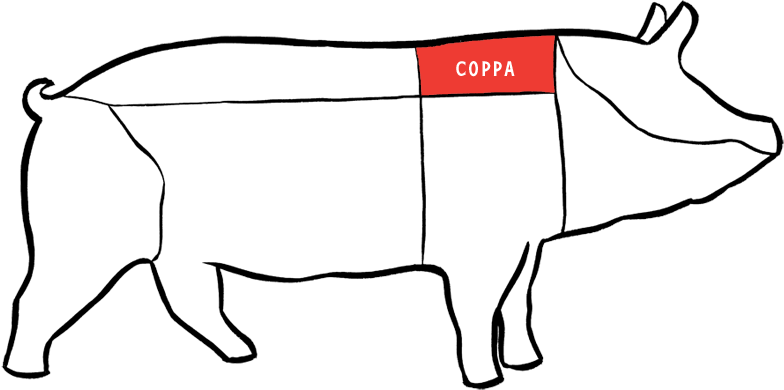
The meat used to produce the top is the pork shoulder or neck, located above the shoulder. The name copa comes from the Italian capocollo, which means neck. Alternatively, it is possible to use pork loin, but in this case the product is called loin coppa. The loin has a covering of fat that can be removed to obtain a leaner product.
Cup ingredients
- 1 kg pork neck;
- 22 g salt;
- 5 g sugar;
- 2.5g curing salt 2 (6% of nitrite, 3% of nitrate and 93,75% of salt)
- 2 g garlic powder;
- 2 g allspice;
- 1 g black pepper;
1 g white pepper; - 0.5 g cinnamon;
- 0.5 g cloves;
- 0.5 g nutmeg;
0.1g bacterial starter culture (lactic acid bacteria) – diluted in 100 ml of filtered water; - 0.1g penicilium nalgiovense mold culture – diluted in 100 ml of filtered water;
- 1 unit of beef bung.
Cup preparation
- Purchase a piece of pork shoulder, which is the crown or neck. Clean, keeping as much of the existing fat as possible and removing connective tissue.
- Apply seasoning, except crops, by massaging the meat;
- Store in a plastic bag or container in the refrigerator for 7 days;
- Remove from the refrigerator, drain the excess liquid and, if desired, wash the meat under running water;
- Dissolve the starter culture in filtered water, wait 10 minutes and spray or spread over the meat;
- Rinse the beef bottom and leave it in warm water for 10 minutes;
- Place the meat inside the beef bung, place it in an elastic net to tighten it and tie the ends with string;
- Dissolve the penicillium nalgiovense mold culture in filtered water, wait 10 minutes and spray on the tops;
- Hang at room temperature, ideal 25ºC, for 72 hours;
- Hang in an environment with an ideal temperature of 12ºC, humidity at 75% to 85% and slight air circulation;
- Keep in this environment until the canopy loses between 35 and 45% of its initial weight.
Maturation
COPPA 1
DAY | WEIGHT | WEIGHT LOSS
15/08 | 784 g | 0%
10/10 | 504 g | 36%
17/10 | 479 g | 39%
10/25 | 459 g | 42%
01/11 | 450 g | 43%
COPPA 2
DAY | WEIGHT | WEIGHT LOSS
15/08 | 408 g | 0%
10/10 | 271 g | 34%
17/10 | 260 g | 37%
10/25 | 251 g | 39%
01/11 | 248 g | 40%

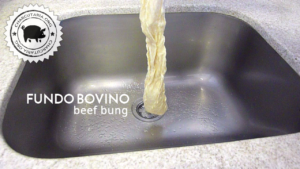



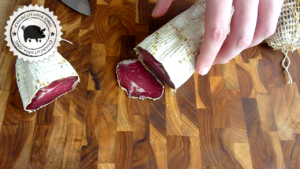
-
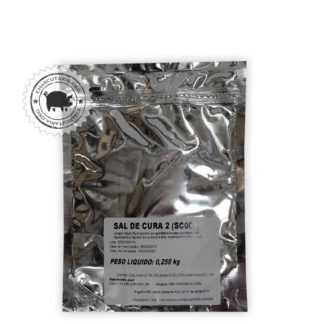 Curing salt 2R$ 8,00
Curing salt 2R$ 8,00 -
 Curing salt 1R$ 8,00
Curing salt 1R$ 8,00 -
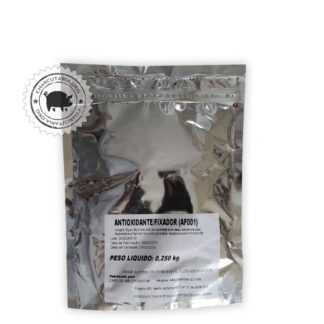 Fixative AntioxidantR$ 23,00
Fixative AntioxidantR$ 23,00 -
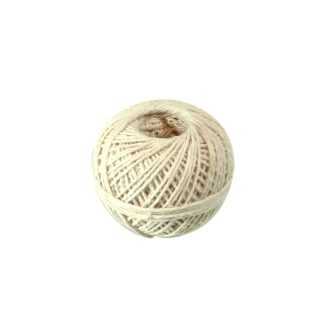 Culinary twineR$ 7,90
Culinary twineR$ 7,90 -
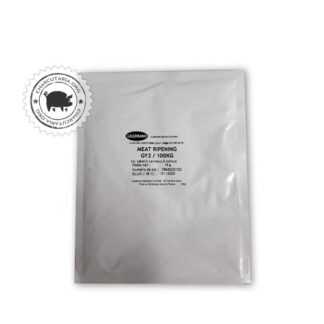 Starter CultureR$ 69,90
Starter CultureR$ 69,90 -
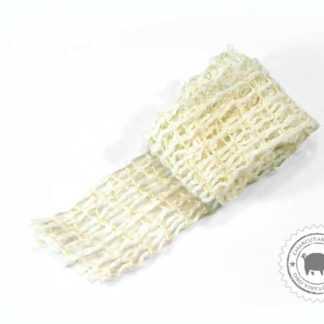 Culinary elastic net 50mmR$ 15,00
Culinary elastic net 50mmR$ 15,00 -
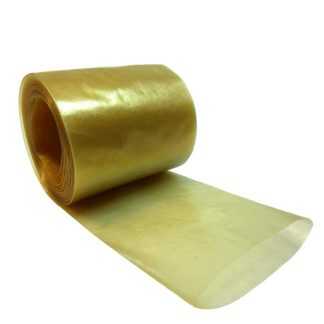 Collagen casing 45mm roll 5 meters salamiR$ 19,00
Collagen casing 45mm roll 5 meters salamiR$ 19,00 -
 Culinary elastic net 65mmR$ 18,00
Culinary elastic net 65mmR$ 18,00 -
 Collagen casing 80mm cup and salamiR$ 29,90
Collagen casing 80mm cup and salamiR$ 29,90 -
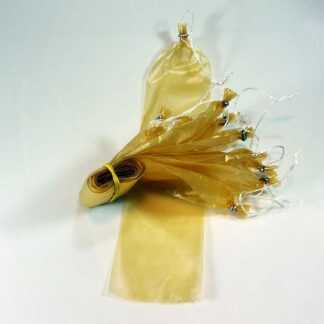 Salami collagen casing 45mm 10 units tiedR$ 19,00
Salami collagen casing 45mm 10 units tiedR$ 19,00 -
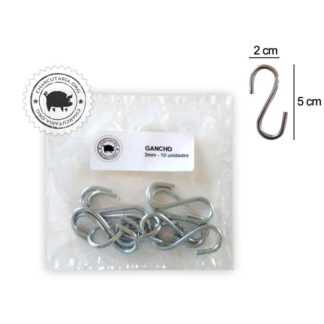 Galvanized HookR$ 12,00
Galvanized HookR$ 12,00 -
 Natural pork casing for sausageR$ 52,00
Natural pork casing for sausageR$ 52,00

Eduardo, good afternoon. Firstly, your tips are very important and have helped me a lot, thank you!!
I recently bought a wine cellar and adapted it into a maturation chamber, but the problem is that here in RS the summer is very intense, and the thermometer inside varies at the peak of hot days between 15ºc and 18ºc, while at night it can stay between 12ºc and 14ºc. As for the humidity, I can maintain it between 65% and 75%. Could this “high temperature” of up to 18ºC make me lose food? They are cured with curing salt 2 in the refrigerator and then cleaned and seasoned with wine to help with the acidity.
Hi Eduardo. There is a risk, but as the nights are cooler it is very likely that there will be no problems during the process. I suggest that you continue in this way and routinely evaluate the progress of maturation.
Hello Eduardo, how are you?
Some help, please.
Since 02/2020 I have already made 4 pieces (12 x 800g) of cups and they turned out really well. They turned out great.
In the latter, I started the process on 08/28/2020, I made 3 pieces of 900g each.
After completing the process (20/10) I consumed a piece that was dry, with good consistency and easy to slice. I kept the remaining 2 pieces wrapped in plastic wrap in the refrigerator.
After 60 days (10/12), when opening a second piece, it had no consistency, looked damp, difficult to slice, and very “soft”. Even when tightening the piece closed, it was not firm. I still have the third one saved, which is very consistent when pressed, very firm.
Please, why did you “reverse” the process?
How to store and for how long?
Thank you very much in advance,
Carlo
Hi Carlos, how much weight did the cups lose in total, did you measure that? Were they firm all over and then became soft in the middle or were they only firm on the outside? The correct way to store it is this: after the process is complete, vacuum pack it or wrap it in plastic film a few times and place it in the refrigerator, it will last at least 90 days.
Eduardo, lost 42% of weight (Initial: 752g; final: 442g),
When I removed the collagen from this piece and washed it, I noticed that it was soft in half of the piece.
The impression I had, based on the #1 piece I consumed, was that the piece was consistent, firm, and then softened.
It's possible?
Hi Carlos. If the piece was not soft and then became soft, it could be contamination that occurred during storage. Check if there has been a change in the odor. If not, perhaps the piece was already much softer in the center and this moisture migrated to the surface of the meat after packaging, in which case there is no problem in consuming it. This usually occurs when the ripening environment was too dry.
Hi Eduardo, sorry for the delay. Your answer probably makes sense.
In fact, when I opened the film, it had a very wet side and a strong odor with notes of ammonia. I left it drying for two days. The odor is gone. This week I will open it and report here. Thank you for your feedback and super attention.
Good evening, what purpose would the starter culture be for?
Hi Mosconi. The starter culture is made up of beneficial bacteria that ferment the salami, reduce the pH, helping to protect it, in addition to improving the color, aroma and flavor.
Good afternoon
Can I make the cup without using the cultures?
Yes, you can do it without the cultures, they are optional to give more protection and flavor.
OK thank you
Hello goodnight. How do you use the plastic box to keep it at 24 degrees? When is it 18 degrees outside?
It is necessary to look for a place in the house that keeps the temperature close to 25ºC, close to the refrigerator motor, for example. If the environment is warmer, leave it for less time to ferment, 48 hours, for example.
Hello Eduardo, good afternoon.
Following your recipe, I'm already on my third cup production. They turned out great.
This time, I decided to get more sophisticated. I bought the net and also the collagen sheet. I also decided to apply a solution with Brie cheese fungi. I scraped the cheese, made a solution and sprayed it on the pieces.
The pieces are in the greenhouse and should be ready within 60 days. It looks great, very white. I had a doubt. You say that fungal colonies cannot contain filaments, nor colors other than white. In my case there are small filaments but with uniform, homogeneous coverage, pleasant smell, without any other coloring. What would the piece look like with mold culture? Attached image of the piece. Could you evaluate its appearance? Thanks!
Hi Carlos. Congratulations on the cup, it's very beautiful. Apparently everything is ok, the mold on brie is penicillium cancidum, which has a certain volume. Penicillium nalgiovense is more superficial. If it's similar to what you see on the cheese, then everything is fine. From the photo it looks like it.
Hi Eduardo, thanks for getting back to us.
It was very pleasant to follow the evolution of the curation of these pieces. Your tips worked really well. Congratulations.
Now, I would like to try making a piece of pork forequarters, like Jamon. By the way, how can you get the same color and texture characteristics as Jamon or Parma hams? lighter, and reddish tone? Please, do you have any material to recommend? Thank you very much in advance.
Hi Carlos, for raw ham, like jamon, parma or serrano, the key is to follow the maturation processes, as is done with the canopy, for example, to be very patient and take care of hygiene. The environment must be well regulated, with good temperature and humidity throughout the process. Monitor regularly and always keep it clean, free from fungi or other contamination. I recommend that you do not use bandages or other wrappings that hide the meat. Start with a small part, from a refrigerator, from a trusted place. Then, as you gain confidence, you can purchase larger pieces of pork butt. We have a post with lots of information about the production of raw ham, take a read: https://charcutaria.org/carnes/presunto-jamon-iberico-presunto-parma-presunto-serrano/
Perfect!! I'll try to make Jamon.
Regarding the fungi in the canopy, they are now taking on an appearance similar to Brie's topping. It worked out!
Thank you for your help and attention!!
Hello Eduardo, how are you?
My cups are in the final stage.
One question, please. Can I consume it without removing the collagen and fungi? Would the function of collagen be to balance/equalize the loss of moisture?
Thanks
In this recipe, beef bottom was used, which is natural and edible. I prefer to remove it, but it can be consumed. In collagen there are some edible and others that are not edible as they are made with collagen and other indigestible compounds, you need to check with the supplier. The collagen sheets/films we sell for canopy are edible.
Regarding the function, yes, that's right, they serve to control moisture loss and as a protective barrier against environmental contamination.
Is it possible to replace the cup with pork picanha?
Hi Osvaldo. Yes, you can replace the cut, the process will work the same way. In general, what impacts the most is the amount of fat in the piece. Cuts with less fat tend to be less unctuous and more rigid, but it depends on each person's taste.
Hail Eduardo... this recipe only stayed in the fridge for 3 days to cure... the other recipes keep for 7 days and some even 15 days... Explain to us why this difference in the initial curing period! Hug.
Hi Julio, this cup was in the fridge for 7 days. It can take between 7 and 15 days. Within this margin it will not change the final result. Thicker pieces can stay longer while thinner pieces incorporate everything more quickly. Hug!
I was wrong… this other recipe that mentions 3 days:
https://charcutaria.org/receitas/copa-lombo-artesanal/
True, this loin cup should only be left in the fridge for 3 days during the first stage. It was very good from what I remember, I had no problems with the distribution of the seasonings. It was a relatively small piece and the recipe had very little seasoning, so I believe that's why it sped up the initial process at the time.
Thank you for the informations.
Good morning! I'm making a Cup but my maturation chamber had a problem and the temperature went to 23º. It's been like this for a few days now. To try to avoid losing the meat, I'm thinking about smoking it until it reaches 72ºC.
In reality, they've already lost between 30-40% of their weight, but it was very quick, I'm thinking about smoking for food safety too. What do you think? They don't look very good
Hi Felipe. Smoking is a good option as it will finish the product more quickly and the smoke helps with conservation. If you can, you can also cold smoke it and leave it hanging for a few more days at room temperature until you finish losing the weight.
I cold smoked it and managed to put it back in the fridge at 12ºC for a few more days. It was beautiful, but it contaminated the center of it. It's not a good idea to eat, right? Photo follows. (I didn't use the mold)
The photo did not appear, send it to contato@charcutaria.org